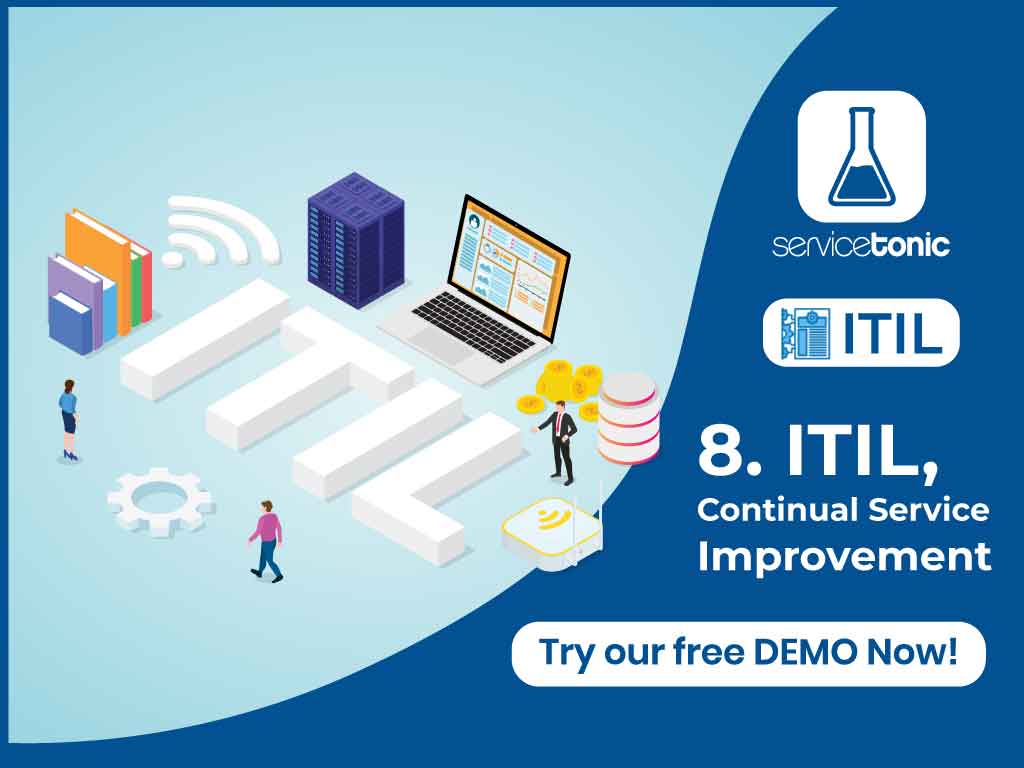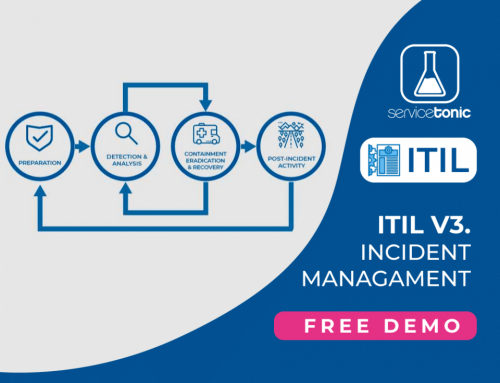Change is the only constant in life.” – Heraclitus, Greek philosopher.
The main objective of ITIL continuous improvement of the service is to keep the Services aligned with the changing needs of the business. To do this, it is related to the rest of the life cycle phases with the purpose of identifying and implementing improvements in both the services and the management processes thereof.
A culture of continuous improvement involves the constant search for ways to improve the effectiveness and efficiency of the activities carried out in the scope of the Service.
Table of Contents
Measure, measure and measure
The service management processes that we have seen so far in the different phases of the life cycle must be implemented and managed by clearly defining their goals and objectives, and establishing metrics to validate that they are achieved.
If we do not use metrics, the business can be harmed in different ways: loss of work hours, increase in costs, loss of reputation …
We need the metrics both to control and to improve. The metrics will identify areas for improvement and alert of potential problems.
The focus of continuous improvement
The continuous improvement approach can be expressed as a set of 6 questions and it is essential to involve the business in the answers.
Question 1: What is the vision?
Understand the medium / long-term objectives of the business.
Question 2: Where are we?
Evaluate the current situation regarding the objectives set out in the business vision. It will be the point of reference to measure the effectiveness of the set of changes that are implemented.
Question 3: Where do we want to be?
Prioritize improvements together with the business. Specific objectives are defined in a limited time.
Question 4: How will we get there?
Prepare a detailed plan that allows us to comply with the provisions of the previous point.
Question 5: Have we arrived?
Measure to determine if the intended objectives have been achieved.
Question 6: How can we maintain the momentum?
Consolidate the changes and ensure that a new cycle of improvement begins.
The process of improvement of 7 steps
The process of continuous improvement of the service is a particular implementation in 7 steps of the Deming Cycle (plan / test / validate / act).
Step 1. Identify the improvement strategy
Before starting any improvement process, we must be clear about what we want to achieve. For that, the following questions may be useful:
- – What does the business need?
- – How IT services can meet those needs?
Step 2. Define what is to be measured
Here we must ask ourselves what we should measure and what we can measure, and carry out an analysis of the shortcomings that will lead us to a metrics plan.
Step 3. Obtain the information
Normally the information is collected in the operation phase of the service through the monitoring elements defined in the design phase of the Service.
Step 4. Process the information
The information collected in the monitoring is processed to obtain the defined indicators.
Step 5. Analyze the information
It is validated that the value of the indicators is adequate for achieving the objectives. Trends are studied
Step 6. Present and use the information
The information has to be formatted and communicated to all the key actors, so that they can understand it and help them to make decisions.
Step 7. Implement the improvement
The information obtained is used to define what has to be corrected, optimized or improved. That is, the improvements to be implemented are established and prioritized.
The improvements are implemented in order of priority.
After this phase a new reference point is created for the evaluation of further improvements.
“You can not manage what you can not control, you can not control what you can not measure, you can not measure what you can not define.” – Manuel Molero, CTO ServiceTonic



